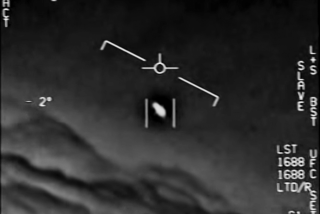CONTACT by Carl Sagan (Simon & Schuster: $18.95; 432 pp.)
First contact between mankind and extraterrestrial intelligence (ETI) is a major topic in science fiction. The universe is big; inhabited worlds should be innumerable. Where are the ETIs? What are they like? Why havenât they reached us yet? What do they have to tell us? What other topic would Carl Sagan choose for his first work of fiction?
âContactâ starts in the tradition of Charles Dickens: A child is born. Her name is Ellie, and she fixes radios before sheâs 10. She becomes involved in the Search for Extraterrestrial Intelligence, SETI. Dr. Eleanor Arroway has established herself as one of the brightest minds around before a message arrives from interstellar space.
A message from the stars is a worldwide event. It cannot be received from any single location. Its importance is such that the world scientific community, established religions, the news media, and national governments must all get involved. The President of the United States and her science adviser (Ellieâs lover) play central roles.
Science-fiction readers may feel that the book starts slowly. The signal from Vega arrives as a string of prime numbers on Page 78. It tells little of the senders. The second signal is merely an early TV broadcast returned to Earth. But donât get the idea that nothingâs happening. By Page 231 we still know nothing of the aliens except that theyâre sending designs for a machine; but in the meantime a world has been described.
Sagan is an optimist. Planet Earth of 12 to 15 years from now is a nice place to live. The nations are breaking up their thermonuclear bombs into fuel cells for power plants. An industrialist has been marketing tiny devices for a TV set that will mute the commercials, or change the channel if you hit a religious show. (Heâs S. R. Hadden, and he will build the machine described in the message.) Nuclear war has not happened; civilization has not collapsed.
The point is, this isnât a novel about aliens. Itâs about communication. We watch governments negotiate to keep the world stable. We watch them share a message from space that falls all across the globe as it turns. We watch them build historyâs most expensive machine--without knowing what itâs supposed to do! Spokespersons for industry and for organized and freestyle religion get into the act. As for Ellie herself, at the end, sheâs more concerned with her relation to her family than with the puzzle she carried back from the galactic core.
The puzzle: If there is a God and He isnât in hiding, He will have left an unambiguous message. What will the message look like? Hint: Who is it Heâs trying to talk to? Saganâs answer is stunning, and satisfying.
Even at the climax, in a docking station near the galactic core, the aliens are still not on stage; not quite. There is communication, but it shows little of the ETIs themselves.
The author, however, is very much on stage. You will learn his philosophy and his viewpoints on the scientific method, religion, education, arms control and stupidity (heâs against it).
One caveat: This author needs an editor. There are jarring changes in tense. There are problems with pronouns: But I found myself arguing with the author. Aloud. This drives my wife nuts, but itâs the sign of a good book.
More to Read
Sign up for our Book Club newsletter
Get the latest news, events and more from the Los Angeles Times Book Club, and help us get L.A. reading and talking.
You may occasionally receive promotional content from the Los Angeles Times.







